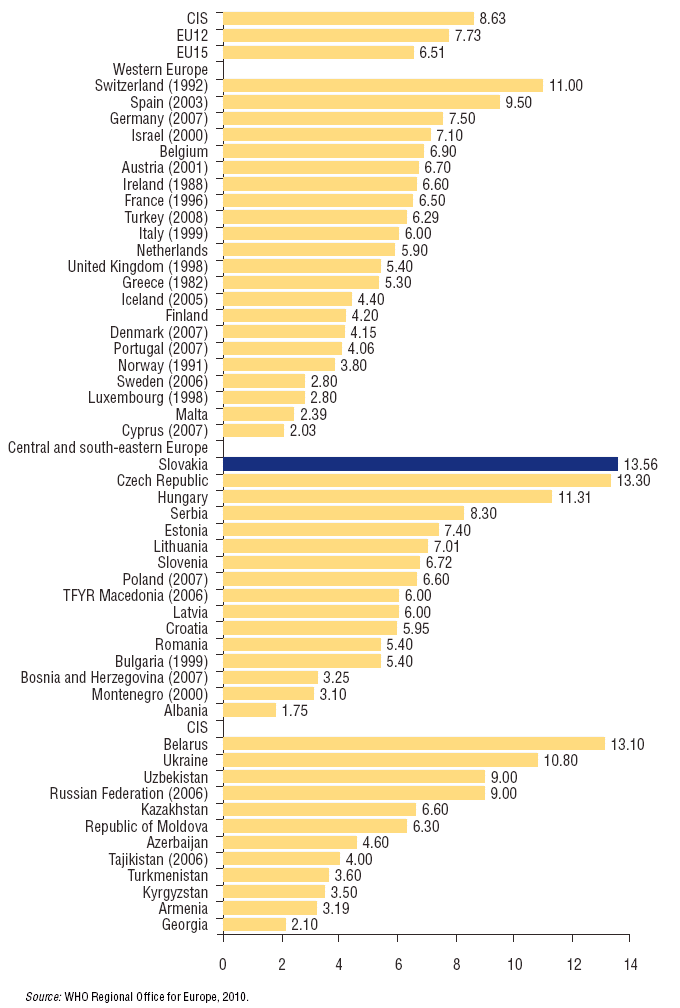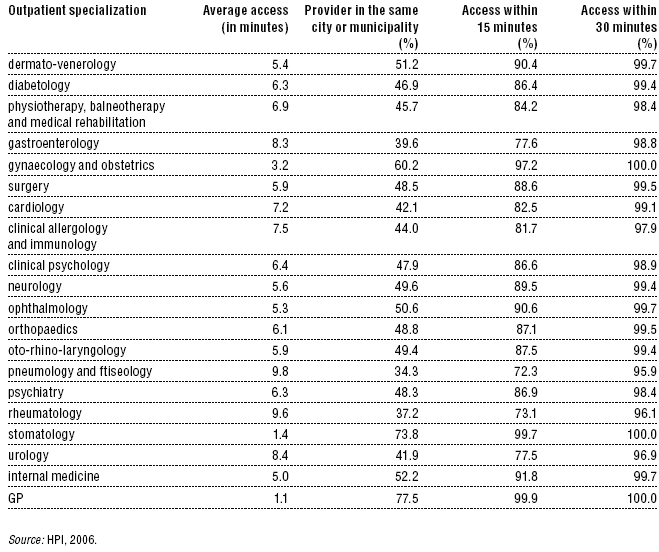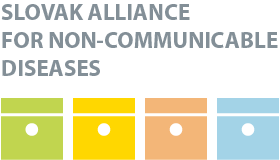—
HPI Network > HPI - Health Policy Institute > Health System in Slovakia > 5. Provision of services > 5.3 Ambulatory care
5.3 Ambulatory care
Thursday, 05. May 2011, 0:59 — HPI
|
5.2 Patient pathways |
Introduction – Organization – Financing – Resources – Provision – Reforms – Assessment – Conclusions – Appendices |
NEXT >>
5.4 Inpatient care |
Ambulatory care consists of general care and specialized care. Emergency medical services and 24/7 first aid medical services (see section 5.5) are special ambulatory care services. Also one-day surgery (see section 5.3.1 Day care) is provided as part of ambulatory care. Since 1993, many services in ambulatory care have been privatized. All GPs have their own private practices. Most specialized outpatient departments have been privatized as well, either as independent practices or associated with polyclinics. Hospitals with attached polyclinics represent a significant market share of specialized ambulatory care.
Patients, except for soldiers, police officers, prisoners and migrants seeking asylum, have the freedom to choose their health care providers for both general and specialized care. Admission of a patient to a hospital requires a referral from a physician, that is, a GP or a specialist. Patients who need urgent care, psychiatric patients and patients in the specialist’s dispensary are exempt from referrals. A health care provider may reject a patient due to work overload, if a conflict of interest arises, or if asked to perform certain procedures irreconcilable with their religious or other beliefs. GPs cannot reject a patient due to work overload if the patient is a permanent resident in the physician’s district or if the patient is in need of urgent care. Patients register with GPs through a written agreement for a period of at least six months, which can only be terminated in writing. Services are covered by SHI if there is a contract between the health care provider and the patient’s health insurance company, or if a health insurance company grants a prior authorization to reimburse care provided by a certain non-contracted provider.
The aim of the gate-keeping system was to avoid unnecessary and duplicated specialist visits and to ensure the coordination of diagnostic and therapeutic processes and, consequently, improve the quality of care. However, capitation payment mechanisms do not motivate GPs to manage patients effectively or to coordinate health care. A comparison of the procedures performed by specialists in 2007 and 2008 has indicated that the number of procedures did not decrease (SME Newspaper, 2008a). The Association of Private Physicians considers cost-sharing a better regulatory tool to constrain health care utilization than referrals. Specialists consider referrals a burden for both physicians and patients (SME Newspaper, 2008b).
The numbers of outpatient contacts in ambulatory care, particularly of GPs, are collected using various methodologies and proxy data. Depending on the data source and methodology used, the number of reported contacts per insured patient varies from 11 to 26 a year (OECD, 2009; Filko, 2008). Thus, even considering the lower value of this range, Slovakia has a very high number of outpatient contacts when compared to other new Member States, well above the European averages (see Fig. 5.2).
Regulation, monitoring, and quality of enforcement in ambulatory and hospital care focuse on structural indicators such as education and premises. Processes are left to the providers and outcomes are regulated by some specific indicators, which are, however, not applicable to the majority of providers (see also section 2.7.2 Information systems).
Ambulatory care is easily accessible in the place of residence for 77% of inhabitants of Slovakia. The same applies to dental care (73%) and gynaecological care (60%). Between 40% and 50% of inhabitants have direct access to most of the ambulatory care specialists within their municipality (see Table 5.1). Ambulatory care is generally available by car within 30 minutes. Health care is least accessible in the mountainous and sparsely populated regions of northern and eastern Slovakia (HPI, 2006). The minimum network requirement is defined as the minimum number of capacities (providers and number of beds) in self-governing regions. Self-governing regions range in size from 2000 to 9000 km2. This does not allow the regulator to influence the accessibility of health care at the local level. An appropriate solution may be adding adequate accessibility as a requirement, rather than only a minimum number of providers for a region.
5.3.1 Day care
Day care is defined as continuous care for no longer than 24 hours. The development of day-care capacities since 2004 is a result of price deregulation and amended legislation. According to the Slovak Association of One-day Surgery (SAODS), 6% of operations are performed as one-day surgeries. The greatest barriers to the further development of one-day surgery are the different payment mechanisms and reimbursement levels in ambulatory and hospital care for the same type of procedures (SAODS, 2006). While day-care facilities are paid for particular procedures, hospitals are paid for completed hospitalization. In addition, contractual limits to the number of services provided may also make day care less attractive. These factors combined make it more attractive for hospitals to provide the care as inpatient care.
Fig. 5.2: Outpatient contacts per person in the WHO European Region, 2008 or latest available year

Table 5.1: Access to selected outpatient specializations (% of population with access within corresponding limit)

News
The amendment of the Decree on emergency medical service
Health insurance companies returned over 400 thousand €
The HCSA received 1,647 complaints last year
A half million people will earn more
Most of public limited companies ended in the black
Debt of hospitals on premiums has grown to nearly € 105 MM
Slovak health care may miss € 250 million next year
Profits of HIC amounted to € 69 mil. last year
Owners of Dôvera paid out money but did not paid taxes
Like us on Facebook!
Our analyses
- 10 Years of Health Care Reform
- New University Hospital in Bratislava
- Understanding informal patient payments in Kosovo’s healthcare system
- Analysis of waiting times 2013
- Health Policy Basic Frameworks 2014-2016
- Analysis of informal payments in the health sector in Slovakia
- Serbia: Brief health system review
developed by enscope, s.r.o.
